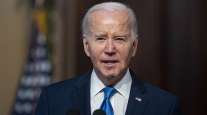HOS Debate Heats Up on Capitol Hill as FMCSA Nears Regulation Deadline
By Eric Miller, Staff Reporter
This story appears in the Oct. 31 print edition of Transport Topics.
As federal regulators worked behind closed doors late last week to meet a court deadline for posting a final hours-of-service rule, trucking industry stakeholders and members of Congress stepped up the level of public debate.
At press time, Federal Motor Carrier Safety Administration officials declined to say if they would meet the Oct. 28 court deadline to post the final hours rule, which could reduce driving time by one hour.
An FMCSA spokeswoman would say only that the agency was “working toward the October deadline.”
Meanwhile, two top officials with American Trucking Associations told Transportation Secretary Ray LaHood that the agency does not have the safety data or research to back up claims that truck driver hours should be reduced, while three senators urged the agency to cut driver hours in its revised rule.
In an Oct. 21 letter to LaHood, ATA President Bill Graves and Chairman Dan England disputed LaHood’s contention that the administration used the “most comprehensive and up-to-date data and analysis” in drafting its new HOS rule.
“There is little or no comprehensive, up-to-date evidence, data or science supporting FMCSA’s proposal,” Graves and England wrote after LaHood made his comment in an Oct. 19 letter to Sen. Kelly Ayotte (R-N.H.), who had introduced an amendment that would have cut funding for the hours rule.
“FMCSA readily admitted it did not have sufficient data on which to base a driving time limit change, yet the agency argued for and stated it ‘currently favors’ reducing the limit,” Graves and England wrote.
“This was a clever way of attempting to shift the burden of proof to the industry to justify the current drive-time limit,” the two ATA officials added.
The ATA letter also scolded LaHood for suggesting that “13% of fatal truck-involved crashes involve an “overly tired” commercial driver and, implicitly, that fatigue caused or greatly contributed to these fatalities.”
While fatigue was a 13% “associated factor” figure in FMCSA’s crash causation study, that doesn’t mean fatigue caused that percentage of fatal crashes, Graves and England stated.
“The definition of an ‘associated factor’ states that ‘no judgment is made as to whether any factor is related to the particular crash, just whether it was present,’ ” the ATA letter said.
The proposed rule was the result of a settlement FMCSA reached with advocacy groups that have twice sued successfully in federal court to block revisions of Depression-era driving limits.
In its December proposal, FMCSA said it was leaning toward cutting driving hours back to 10 from 11 and modifying the 34-hour reset provision by requiring that it include two rest periods of at least six hours and mandating that they fall between midnight and 6 a.m. (1-3, p. 1).
As the Oct. 28 deadline approached, the consensus among industry stakeholders seemed to be that the rule would be delayed.
Dave Osiecki, an ATA senior vice president, said late last week that the rule still had not advanced to the White House Office of Management and Budget for review.
“There’s just no question,” Osiecki said Oct. 27. “It’s not going to be transmitted to OMB tomorrow and approved Friday.” The OMB process typically can take up to 60 days.
Gregory Beck, an attorney for Public Citizen, a plaintiff in the federal lawsuit that forced the hours rule revision, said he’s also heard unofficially that the rule will be delayed.
Henry Jasny, an attorney representing the Advocates for Highway and Auto Safety, plaintiffs in the hours lawsuit, said on Oct. 27 that he believes the agency will miss the deadline.
“We just want to get some understanding from the agency as to what their thoughts are and their game plan so we have an idea what they’re looking at going forward before we respond to the court,” Jasny told Transport Topics.
Jasny said if FMCSA misses the deadline, the plaintiffs could take the issue back to court.
Also last week, three senators sent a letter to President Obama supporting a driver-hours cut.
The letter, signed by Sens. Frank Lautenberg (D-N.J.), John Rockefeller (D-W.V.) and Barbara Boxer (D-Calif.), argued, “Fatigue is the primary factor in 30 to 40% of large truck crashes.”
“The DOT’s proposal would permit increased flexibility for CMV drivers to get adequate rest when they need it and to adjust their schedules to account for unanticipated delays without sacrificing a full day’s work,” the senators wrote. “As you finalize the HOS rules, we urge you to make safety, scientific research and the work that has already been completed by the DOT the primary factors in your decision.”
“The DOT must protect public safety at the same time,” the letter said. “Under the current HOS rules, drivers operating CMVs often work demanding schedules, including workweeks in excess of 80 hours, averaging over 13 hours a day. These schedules can prevent a driver from getting proper rest and therefore become a safety risk to other motorists.”




